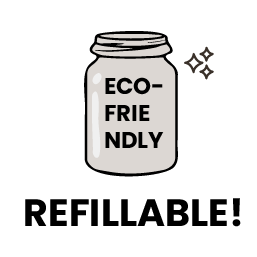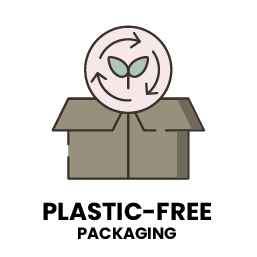8 Tips to Live Without Antiperspirant and Keep Your Friends
Let me share with you how even a sweat-prone athlete can make the switch and love natural deodorant.
My husband and I had been experimenting somewhat unsuccessfully with transitioning off anti perspirant for years. Why? There are two main reasons. Aluminum salts, which are the active ingredient, cause your sweat glands to swell up so they can’t release sweat. Although we do have a high saturation of sweat glands in our armpits (we sweat through both our skin as well as through the hair follicle in that area), our body will compensate by sweating through other pores. Sweat has two purposes, to cool us off, and to release our body’s waste and remove environmental toxins. So, if we clog a major area of perspiration longterm, it can’t be good for our body’s balance. The second reason is that Aluminum (to be specific, Aluminium chlorohydrate and aluminium zirconium tetrachlorohydrate) may be linked to breast-cancer (although there's debate about this). And finally, the chemical soup of known carcinogens such as parabens (preservatives), phthalates (fragrance), propylene glycol (anti-freeze), or even formaldehyde are the reason many of us are making the switch to clean beauty and personal care overall.
Back to our quest.
We tried the rock deodorant (this only worked for me, not him), and any number of natural stick deodorants with a great smell, but all they failed when it came to preventing us from smelling like bad B.O. by the end of the day. We certainly would never use either of those options if we knew we were going to have a stressful day, or a really grueling workout. (My partner is a runner and hockey player, so anti-perspirant days were exactly 70% of the time.)

- Use a Charcoal Soap Bar to help you detox from your antiperspirant. Your armpit pores will be clogged and you’ll need to shed the years of build up. Charcoal acts in two ways here: it acts like a magnet to pull out any impurities that should not naturally be in your body, and it acts as an antibacterial agent. (We still use charcoal soap in the shower daily, just so we start the day with a surface free of bacteria. You can get some at G & F.)
- Ingredient checklist: Choose a natural deodorant with the mineral magnesium hydroxide (inhibits bacterial growth), arrowroot powder and clays to absorb moisture and help to detoxify, essential oils that are anti-bacterial and smell nice, all in a base of non-greasy, quickly absorbing, oil such as Safflower and Mango Seed. Guess what? You can get such wonderful cream deodorants from us! (We have some roll ons, too.)
- Approach baking soda with care. It isn’t a sure thing, but many people have developed skin irritation (immediately, or over time) because it is quite a bit more alkaline than the skin’s pH. All baking soda, aka sodium bicarbonate does, is neutralize smell, like it does in your refrigerator. But the bacteria in your pits thrive in an alkaline environment, so baking soda really doesn’t get at the root problem, it only gets rid of the evidence.
- Application tips: At first you will need to wash every day to to provide a clean surface (reasons explained below). Ensure you get full coverage of the pit area — no need for a thick application, but do cover all the places where your skin touches. Dry your pits completely after your shower. (Remember, bacteria love to grow where it's moist!) You can use a toner spray on your pits, too, but ensure it has had time to dry as well. The toner will help with creating an antibacterial baseline. (a 50/50 mix of witch hazel and a floral water work well. You can buy these by the gram to DIY your own!)
- Be prepared for some extra sweat for a few days to a week as your body recalibrates. Remember, your body has been compensating for your blocked armpit pores. Once the message gets to the brain that the pits are available again, things will balance out.
- Be vigilant with your laundry. You may also be extra stinky for a bit as the recalibration happens. Your sweat glands have been backed up for years. There’s some purging to do! So ensure that your shirts are cleaned in a solution that will kill bacteria. If not, as soon as you wear the shirt again and the fabric warms up next to your body, you will smell the bacteria getting back to work! A pre-soak in hot water, baking soda and washing soda should do the trick! (Get both of those ingredients in bulk, or in our laundry detergent.)
- Consider shaving. Hair creates more surface area for bacteria to make a home. Hair is also porous and absorbs scent. (Pit hair is designed to be a delivery system to waft our pheromones about. Back in our wild days as a species, this was great for attracting a mate, but now, not so much!) We have some gorgeous plastic-free reusable razors if this is something you’d like to consider.
- Finally, wear breathable fabrics. Polyester is very common in sports gear because it’s light and dries fast; however, it is the worst offender for stinking you up. Polyester is hard to fully launder out the B.O. (unless you’re dousing your clothes with high concentrations of synthetically scented detergent and dryer sheets). If you’d like an alternative to cotton, which tends to be heavy when we sweat in it, try active wear made from merino wool or Tencel instead. Yes, you read that right, wool. Merino is soft, naturally wicks moisture away from your skin, can be cool in summer or hot workouts if the weave is super fine and light, is fully de-stink-able in the laundry, compostable, and the natural lanolin in the wool is anti-bacterial to boot! (Check out Icebreaker for a good sustainable brand.) Tencel is light and wicking as well. It’s made from waste tree pulp in a way that ensures no effluent is released into the environment. You can read more about it here at Patagonia.
With these steps and considerations, you could be throwing a happy pit party in no time. Leave us a comment here on Instagram when you do!
P.S. If you’d like a recipe to DIY your own, here’s one from Tara, Green & Frugal’s Founder and Formulator.







